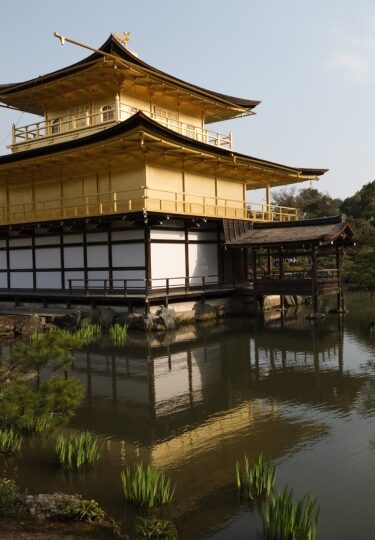At the best places to visit in Japan, ancient traditions and natural beauty are enduring attractions for travelers.
Whether from the vantage point of the archipelago’s most famous mountainscapes, notably Mount Fuji and the surrounding Five Lakes region, or the Tōdai-ji Temple in Nara, home of the Great Buddha, this East Asian country is a treasure trove of distinct heritage.
If you’re looking for places to go in Japan, let your creative imagination run wild with the possibilities, including the inspiring Ninna-ji Temple in Kyoto or the dense forests of Mount Hakkoda, just two highlights of the Land of the Rising Sun.
Nara and the Great Buddha
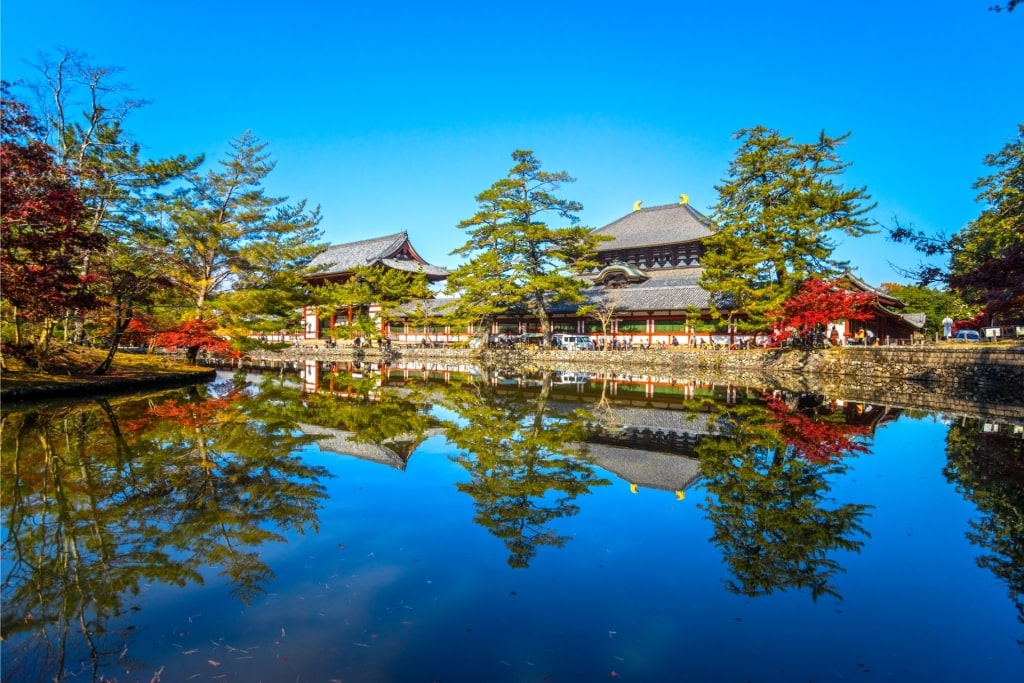
Tōdai-ji Temple, Nara
In Nara, around 20 miles or so from the megalopolis of Osaka, you can witness ancient human religious traditions and the natural world all melding into one.
Nara was the first permanent capital of Japan in the seventh century and today, it’s full of incredible UNESCO World Heritage sites of immense historical value. Most imposing of all is the Great Buddha, Daibutsu, a colossal bronze statue of over 49 feet tall.
Tōdai-ji Temple’s Vairocana, or “light” Buddha, with construction beginning in 745 AD, exudes an otherworldly presence, a reminder of Japan’s artistic and cultural past and Buddhist traditions today. It’s quite a sight to behold.
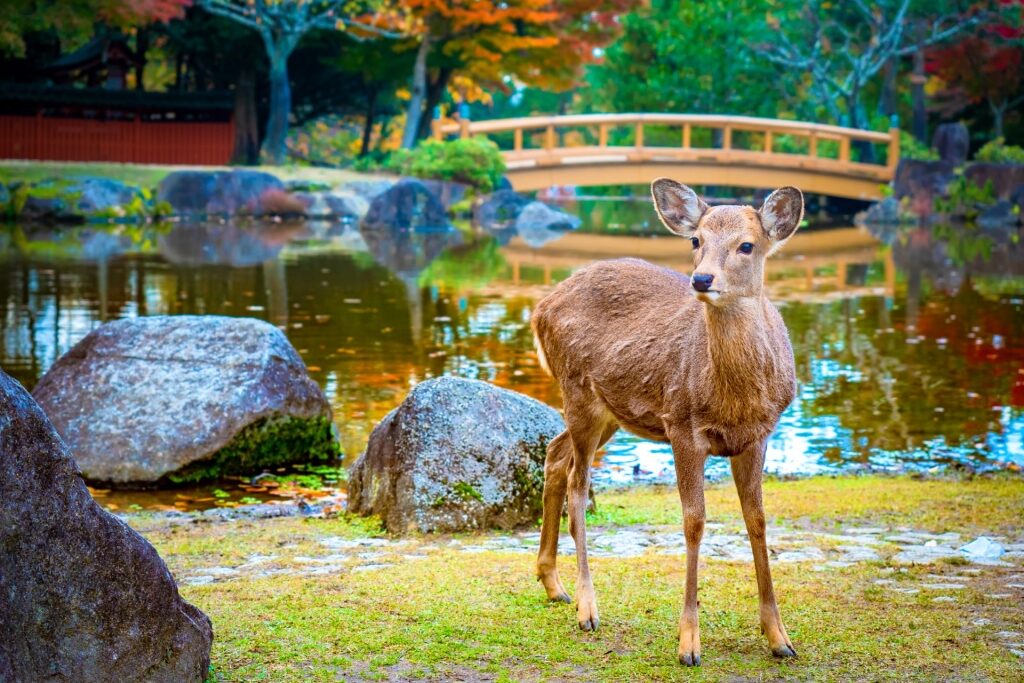
Nara Park
Another thing you’ll notice in Nara is the free-roaming deer in grassy Nara Park, and other spots scattered around town. These animals are revered as the sacred messengers of the gods in the Shinto religion, showing just how close Buddhism and Shinto have interwoven with one another in Japanese society over the years.
You will also see plenty of deer at the striking Kasuga Taisha Shinto shrine, painted in vibrant red, which you should check out for more insights into the Shinto faith.
Sensō-ji Temple, Tokyo
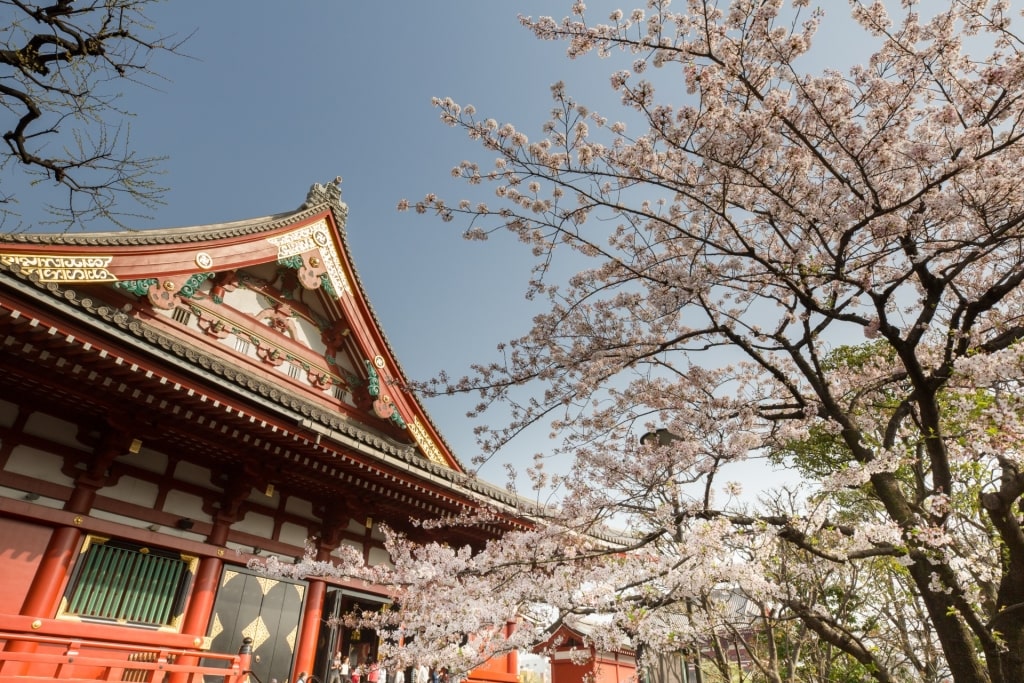
Sensō-ji Temple, Tokyo
Sensō-ji Temple in Tokyo, in many ways, is the ultimate Japanese destination, especially if you’re short on time. The experience of Japan is all squeezed into a single package here: history, religion, culture, and retail opportunity.
Japan’s oldest and most significant Buddhist temple, located in the Asakusa neighborhood of Tokyo, receives up to 30 million visitors annually. If you’re looking for the best places to visit in Japan, perhaps embodying the nation’s spirit, you won’t find many sites better than Sensō-ji.
The first thing you’ll see here is the Kaminarimon or Thunder Gate, and the giant red lantern hanging at the entrance’s mouth. Next, you’ll stumble upon a long shop-lined alleyway called Nakamise-Dori, which will eventually bring you to the temple precinct. This is where you can buy snacks, trinkets, and gifts.
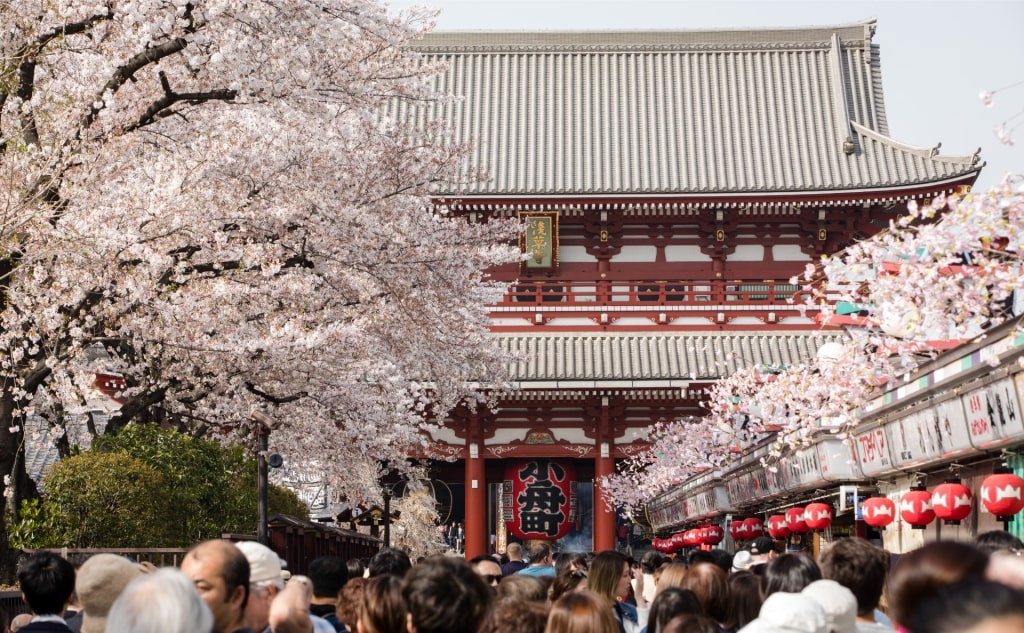
Sensō-ji Temple, Tokyo
While exploring the vast grounds of the temple, you’ll see the five-story pagoda and the temple’s main hall. Remember, of course, that temples in Japan can get very busy and there may be crowds around.
Sensō-ji will offer you a window into Japanese culture, ancient and religious traditions, as well as modern life focused on shopping, which is a great introduction to Japan as it is today.
Atomic Bomb Dome, Hiroshima
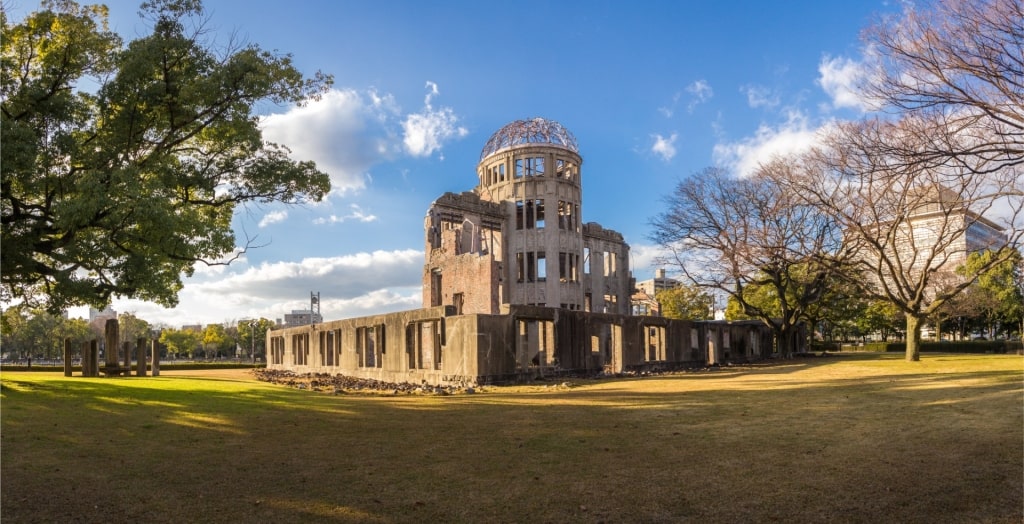
Atomic Bomb Dome, Hiroshima
The Atomic Bomb Dome marks the spot of the most tragic 20th-century event in Hiroshima. Once called the Hiroshima Prefectural Industrial Promotion Hall, the cultural and historical significance of this building, and site, forever changed after World War II.
On August 6, 1945, a nuclear blast from an atomic bomb detonated in the air directly above this building. Today, the building’s ruins—a UNESCO-recognized World Heritage Site—have been preserved as a memorial and reminder of that dreadful day and its aftermath.
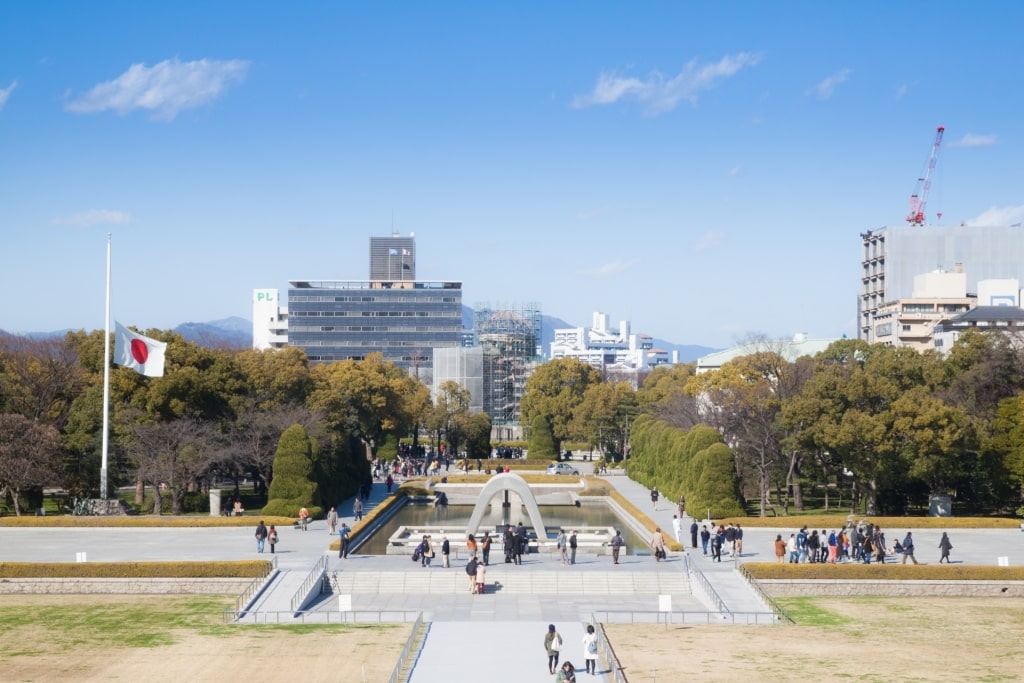
Peace Memorial Park, Hiroshima
Wandering around the Peace Memorial Park is a somber, haunting experience. Before you reach the Hiroshima Peace Memorial Museum, you’ll pass by several monuments and statues telling the story of the bombing and terrible human suffering.
While it’s a heartbreaking experience at times, it’s important to see, to make sure humanity never makes this mistake again.
The park itself, and even the ruins of the dome, are quite beautiful, serving as a reminder of the deep-seated human capacity for preservation and recovery after terrible events. The Atomic Bomb Dome is absolutely one of the best things to do in Hiroshima.
Hirosaki Castle, Aomori
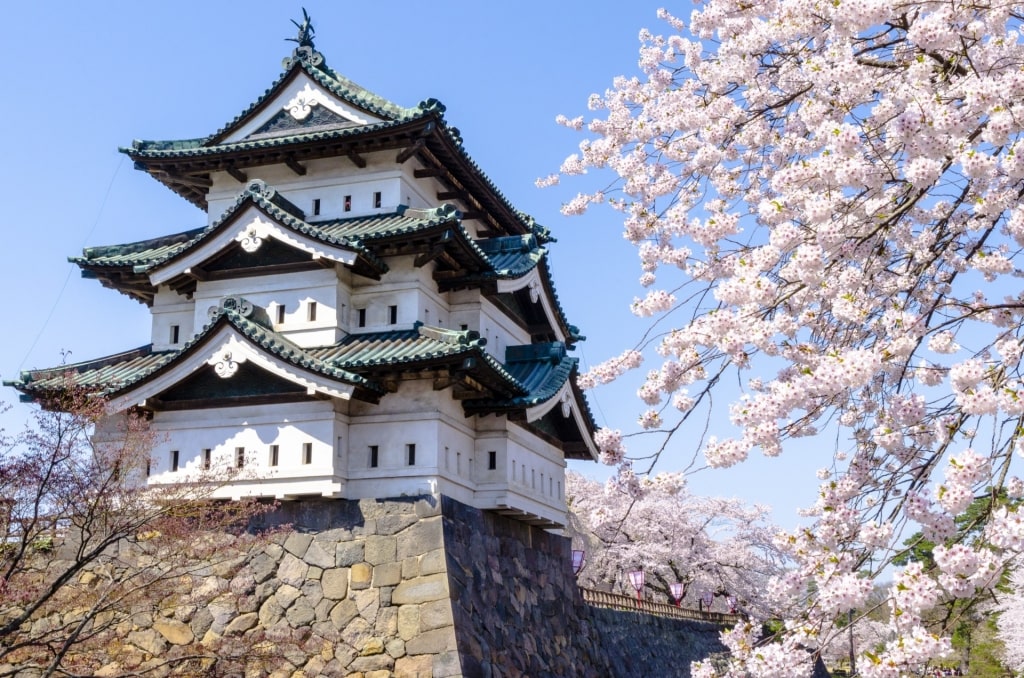
Hirosaki Castle, Aomori
Located near the northern tip of Honshu island, which is the main island of Japan, Hirosaki Castle—Hirosaki jō in Japanese—with its white façade, three levels, sloping, gabled roofs, and stone foundation, impresses with its transcendent beauty.
Hirosaki Castle is also one of the last originally constructed Edo-period castles left in Japan, making it well worth the train or bus ride there.
Japanese castles are quite different from their European counterparts in construction and design. Japanese castles are characterized by wooden construction, with curved, tiled roofs, whereas European castles tend to be made from stone.
The castle is one of the most beautiful places in Japan, surrounded by cherry orchards, offering a lovely natural setting paired with splendid Edo-period architecture.
Cherry blossoms and Japan’s affection for these pink puffball blooms are all part of Japanese culture, which is another reason why Hirosaki jō should make your list of places to go in Japan, especially during blossom season, between March and May.
Mount Fuji
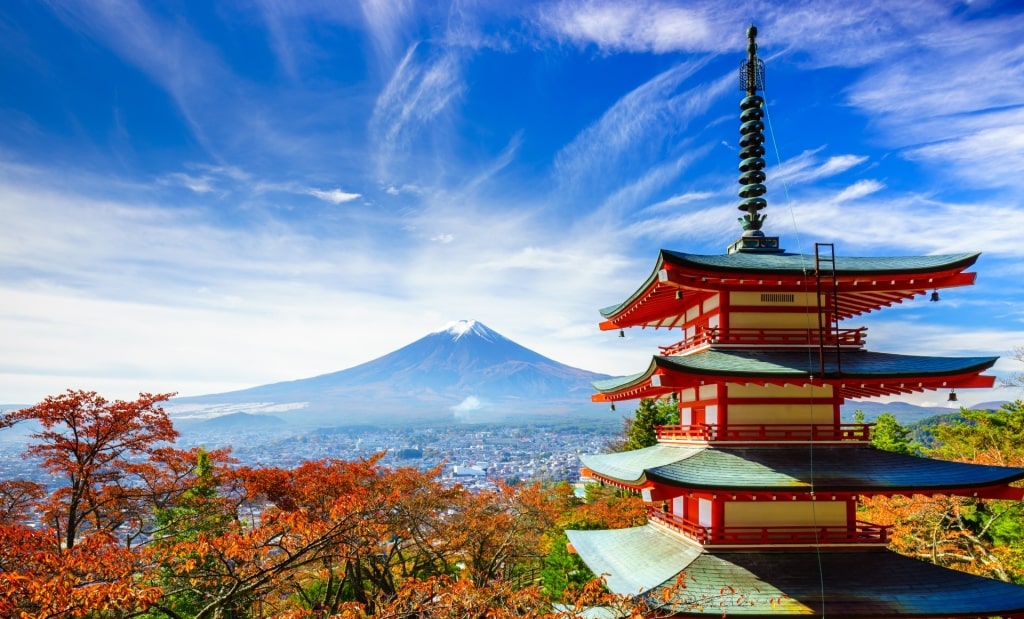
Mount Fuji
Rising more than 12,000 feet like a majestic skyscraper, Mount Fuji is Japan’s tallest and most revered mountain, and the country’s signature symbol for its stark natural beauty and long cultural heritage. It even has UNESCO World Heritage status.
When you gaze up at its snow-capped summit, you will be staring at a mountainous landscape that has inspired centuries of poets and pilgrims with its pristine beauty.
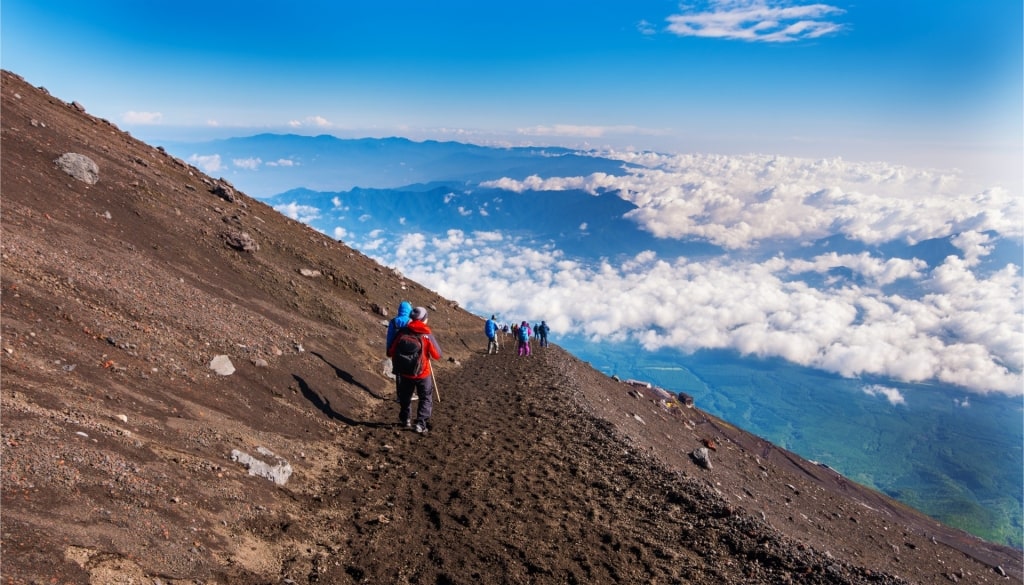
Hiking in Mount Fuji
Climbing Mount Fuji, especially during the country’s official climbing season from July to late August and the first part of September, is a bucket-list activity for many people when it comes to the best places to visit in Japan.
This Japanese mountain will give you magnificent vistas and outdoor activities at its Five Lakes region, near the base of this picturesque cone volcano. Discover local outings such as boat rides and soaking in the local hot springs.
Fukuoka
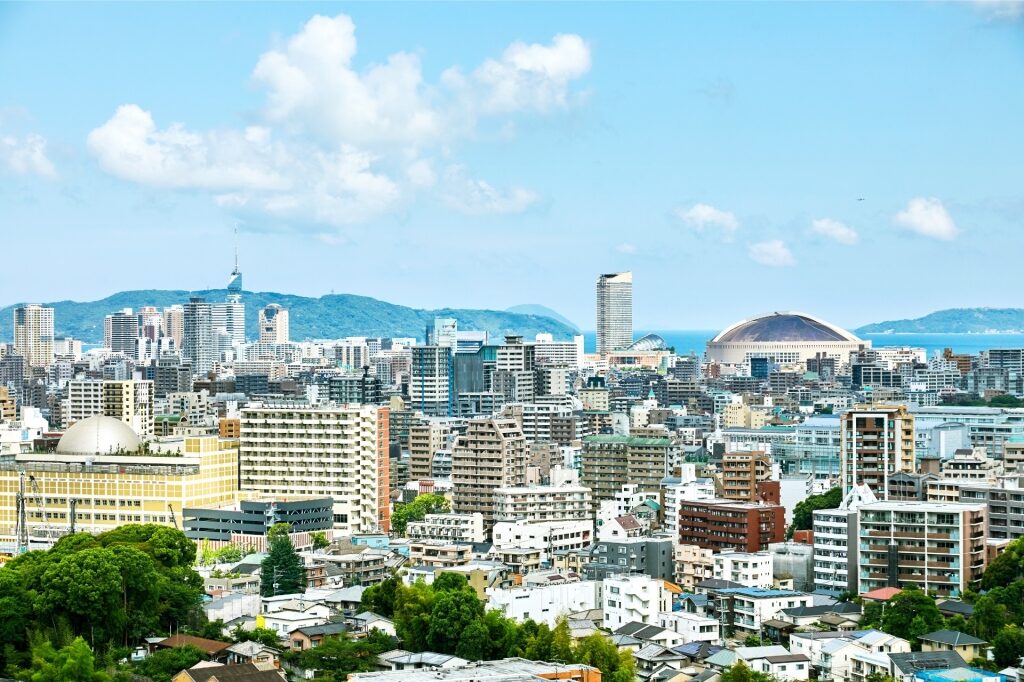
Fukuoka
For some urban life and culture on Kyushu Island, you can’t go wrong with a visit to Fukuoka. With its bright lights and bustling social scene, Fukuoka is a great spot to head to if you’re fond of Japanese food.
Make sure you try the locally and internationally adored Hakata ramen, pork-flavored ramen with thin noodles, which takes center stage in the city’s culinary space.
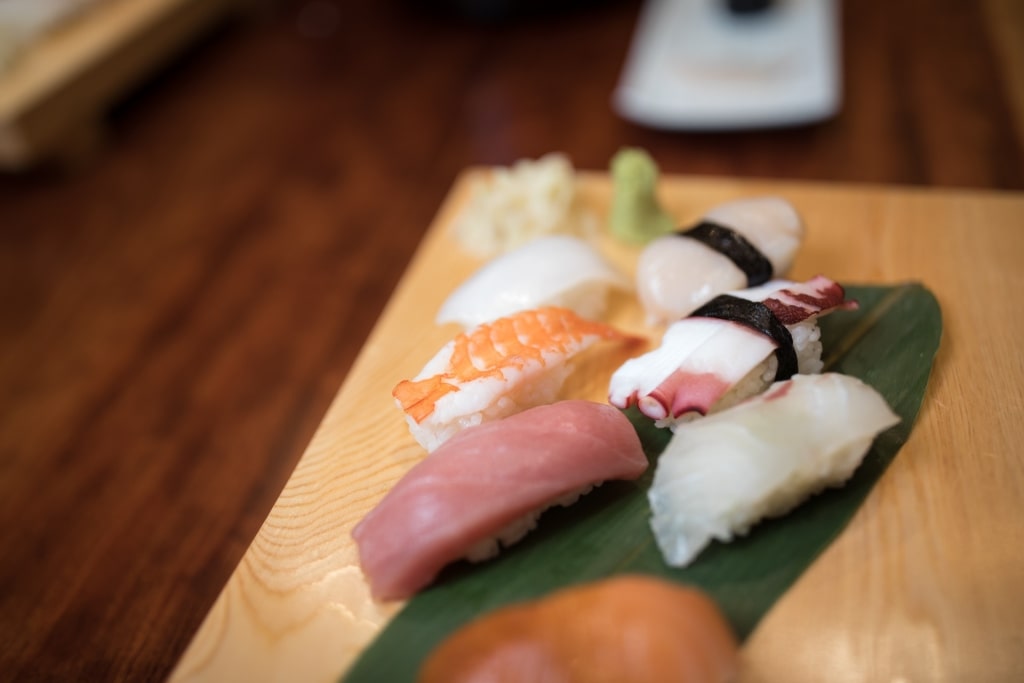
Sushi
In addition to Hakata, Fukuoka is known for its vibrant street food scene, where yatai, or food stalls, offer everything from yakitori skewers and oden hot pot to curry and gyoza. These stalls come into their own in the evening, giving food lovers a front row seat to watch the vendors at work.
For some traditional non-food-oriented sightseeing, you’ll find plenty of historic temples in town, along with exquisite Fukuoka Castle in Maizuru Park, where there are abundant cherry trees.
Shopaholics won’t be left out either, as the Tenjin and Canal City shopping districts will provide you with some of the best things to buy in Japan, from luxury brands to local knick-knacks and traditional goods.
Golden Pavilion, Kyoto
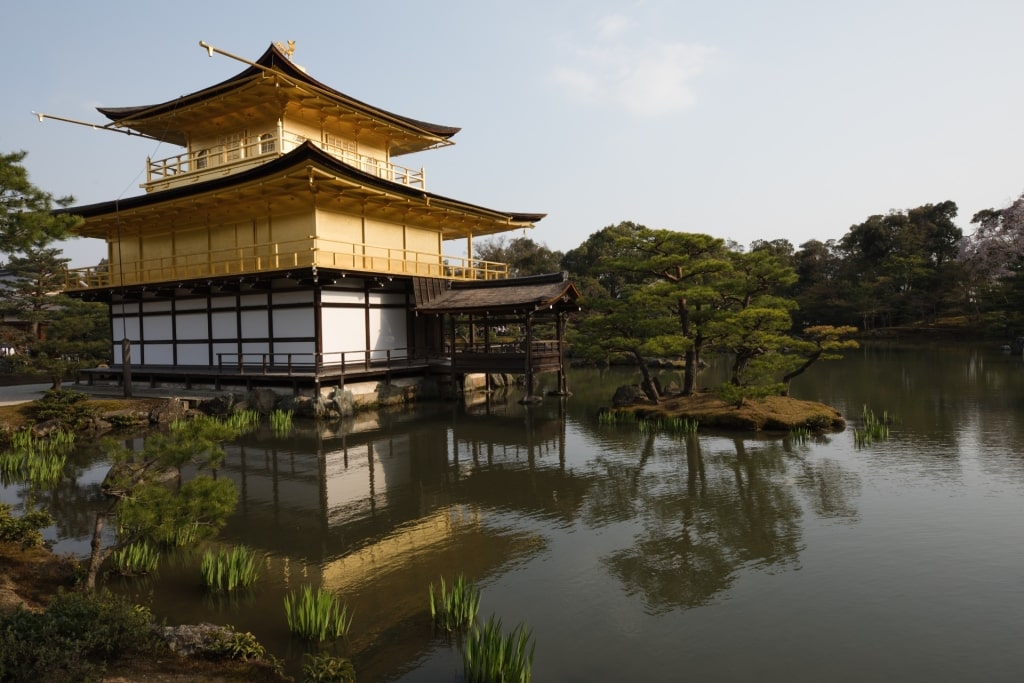
Golden Pavilion, Kyoto
Visiting Kyoto’s Golden Pavilion, Kinkaku-ji, is among the best things to do in Kyoto due to its indescribable beauty and storied history. The top two levels are covered in meticulously crafted gold leaf so that this gorgeous, three-story building sparkles in the sunlight.
The pavilion is also reflected in the glassy pond by which it stands. When the sun rises behind this graceful-looking structure, it creates an extraordinary effect, accenting its calming, golden hues, making it one of the most unique and soothing places to visit in summer in Japan.
The original structure dates back to the 14th century, with each floor of this Zen Buddhist temple composed in a different style, including the buke-zukuri and shinden-zukuri styles.
As you ramble through the meticulously tended Zen gardens here, you can revel in the serene atmosphere of Kinkaku-ji; it’s a great way to take a mental break from a hectic world.
Mount Hakkoda, Near Aomori
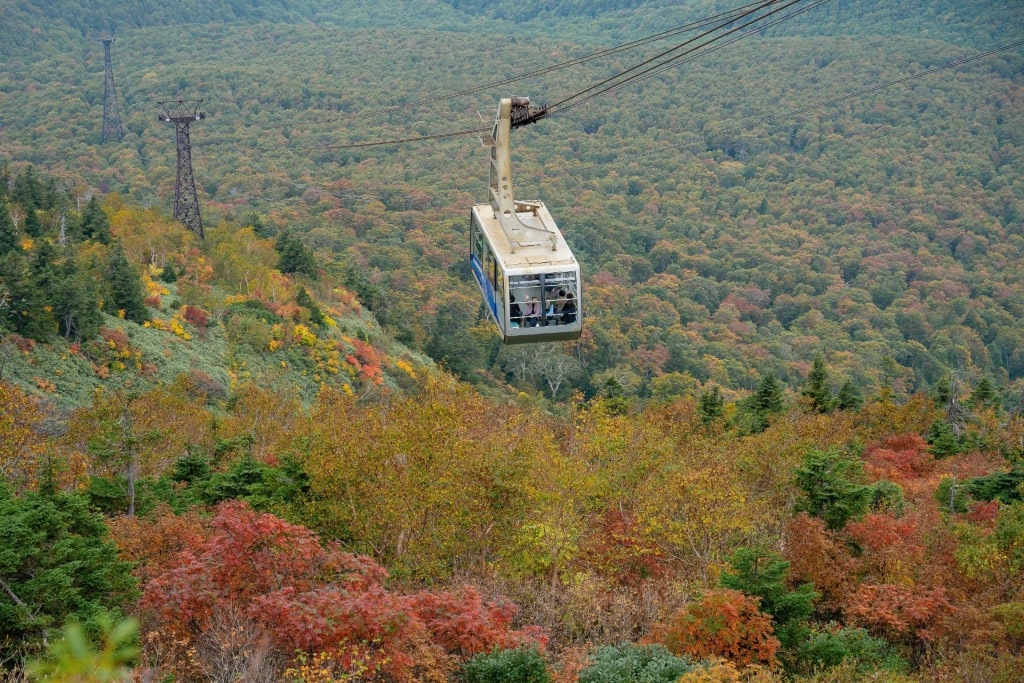
Mount Hakkoda, near Aomori
In the cooler, northeastern part of Japan, near the city of Aomori, you’ll find Mount Hakkoda, a series of volcanic peaks that’s a pleasure to take in, especially in spring or summer when the landscape is wreathed in verdant greenery, or fall, when the trees change color.
Hakkoda is a great destination for hiking in Japan, with world-class trails scattered among its dense forests. Footpaths also wrap around fields and slopes covered in alpine flowers.
The Hakkoda Ropeway travels up to the mountain’s summit, offering you sweeping panoramas of one of Japan’s most magical regions.
Read: Why Visit Japan in the Fall
Arashiyama Bamboo Grove, Kyoto
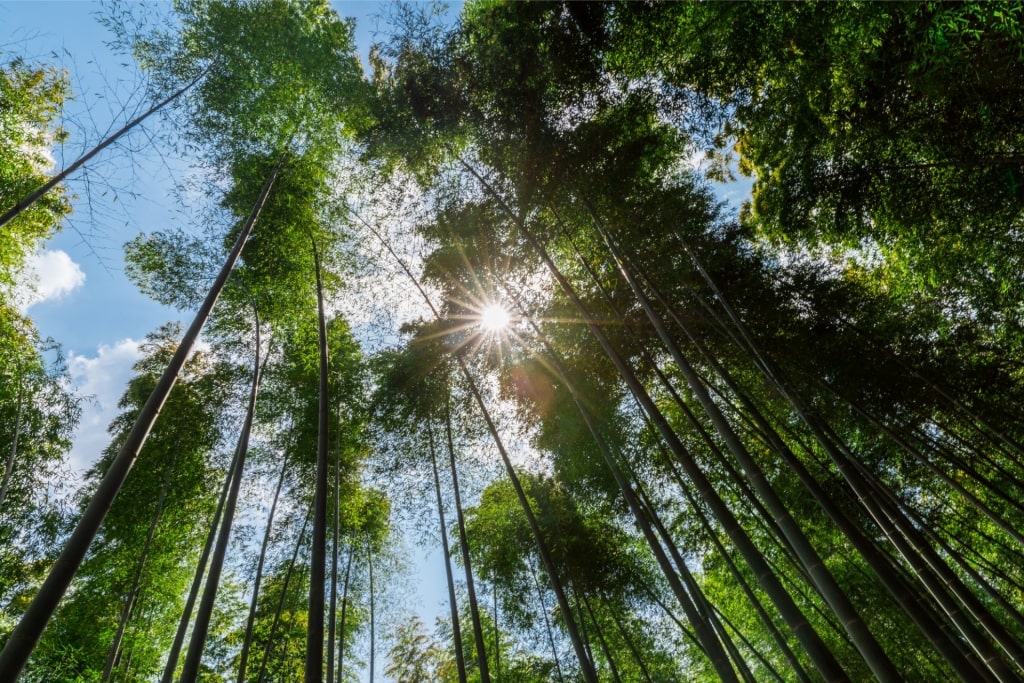
Arashiyama Bamboo Grove, Kyoto
Kyoto is rich in culture, with over 1,000 Buddhist temples and hundreds of Shinto shrines. Here, you can immerse yourself in a sea of green bamboo at the Arashiyama Bamboo Grove, one of the best places to go in Japan.
These swaying, densely packed bamboo stalks, with light dancing through the spaces in between them create a locale with a lush, calming ambiance that also makes for some great photo opportunities.
When you visit, the best advice is to let the bamboo forest sway beside you, and simply take over your senses: sight and especially sound.
Beyond the beautiful forest, other wonders await, like the Rinzai Zen Buddhist Tenryū-ji temple, which is a charming and tranquil site, surrounded by trees and water, plus traditional tea houses, letting you experience some of the best Kyoto has to offer.
Imperial Palace, Tokyo
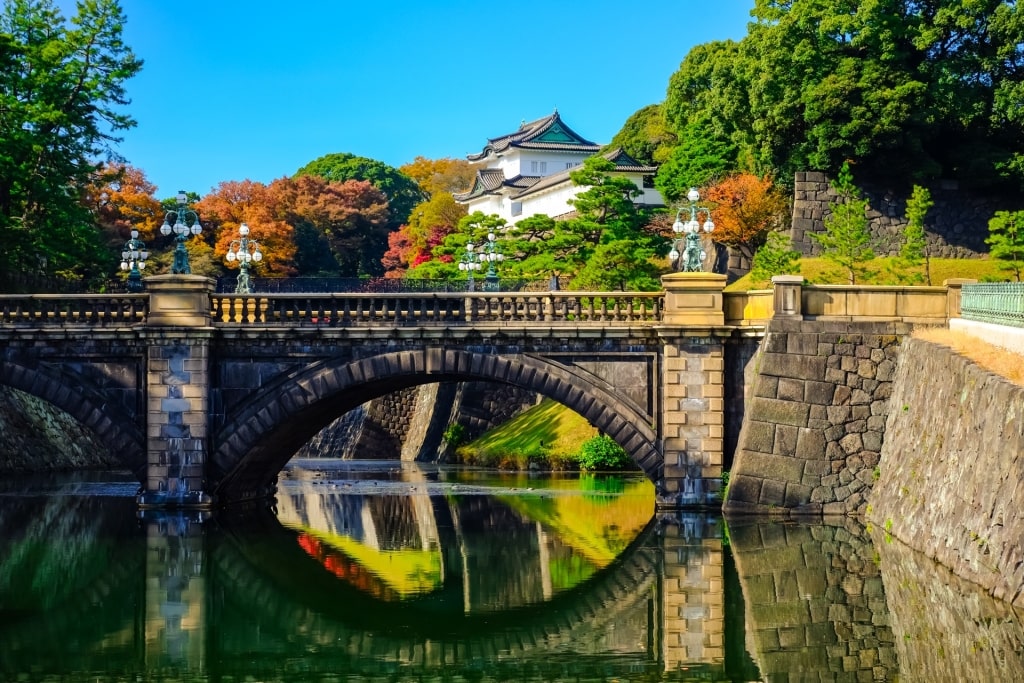
Imperial Palace, Tokyo
The Imperial Palace in Tokyo, home to the nation’s emperor, is a place of regal wonder and beauty. As you walk into the Japanese gardens, you’ll notice the moat, walls, ponds, flowers, and trees, all carefully groomed and cared for, especially in the East Gardens.
Then, when you catch sight of the palace itself, you can’t help but be impressed by its stately appearance and white facades.
Try to imagine how the samurai and the ruling class went about their days here in ages past, living lives of leisure and luxury, punctuated by bouts of extreme violence and political intrigue as different groups positioned themselves for power.
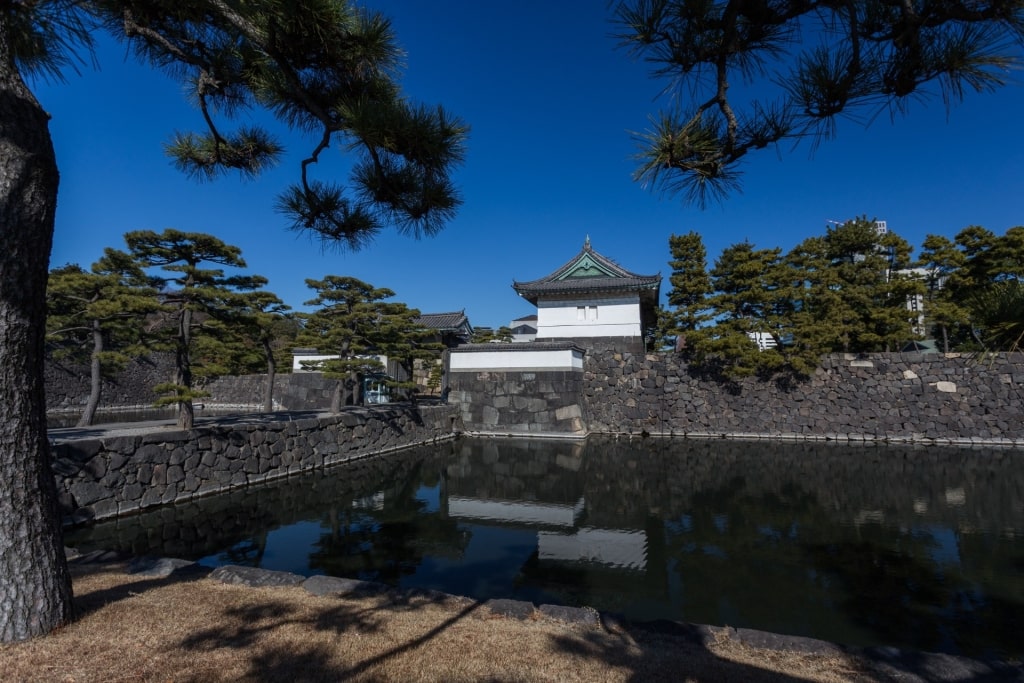
Imperial Palace, Tokyo
The palace rests on the old site of Edo Castle, whose Chidori-ga-fuchi moat, stone walls, and weeping cherry trees are still preserved to this day. You can even rent a small boat and row around the moat yourself.
The flowering season brings the cherry trees and other blossoms into full effect, transforming the East Gardens into a scene that rivals many of Japan’s more popular Sakura viewing sites, making a visit here well worth your time.
Read: Three Days in Tokyo
Goryokaku Fort, Hakodate
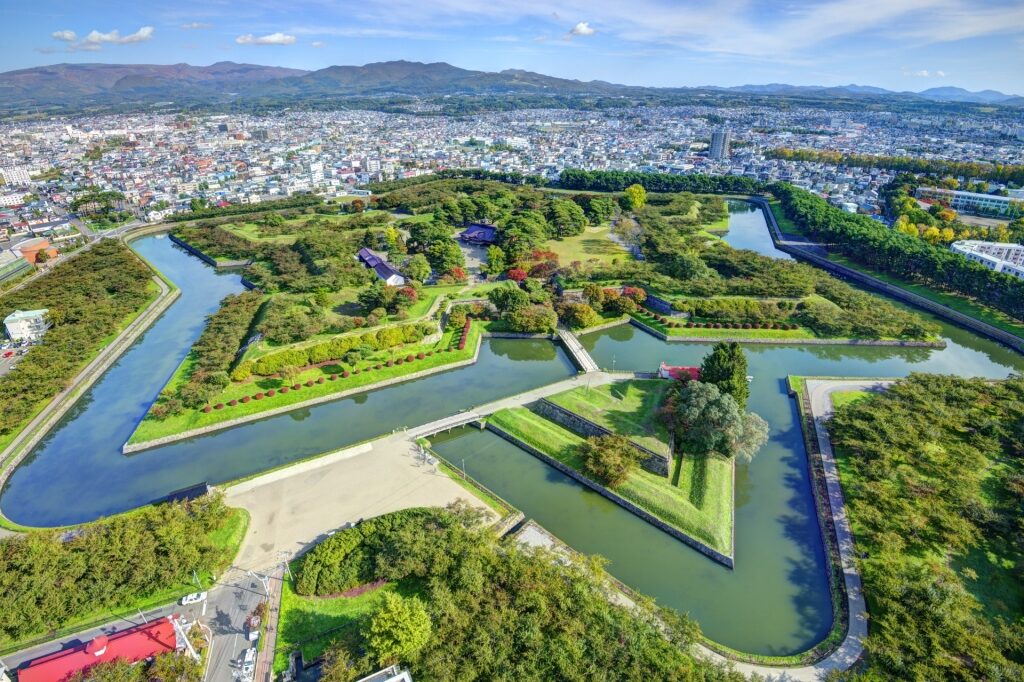
Goryokaku Fort, Hakodate
Another of the best places to visit in Japan is Goryokaku Fort in Hakodate. This star-shaped citadel, with five sturdy walls rising from the ground and opening up into one other to give the fort its shape, along with the surrounding moat, is truly something unique.
The design of this star fortress is as distinctive as it gets. Originally built as a defensive bulwark in the mid-19th century to protect the once-impregnable island of Hokkaido from Russian invasions, the fort has gained a second life as a pretty park.
In the modern era, Goryokaku Fort, modeled after Western-style forts, doubles up as a popular spot for springtime hanami, or cherry blossom admiration. You’ll find the best views from the fort’s observation tower, which you can climb for sweeping vistas of the fort itself and the surrounding area.
Itsukushima Shrine & Miyajima Island, Hiroshima Bay
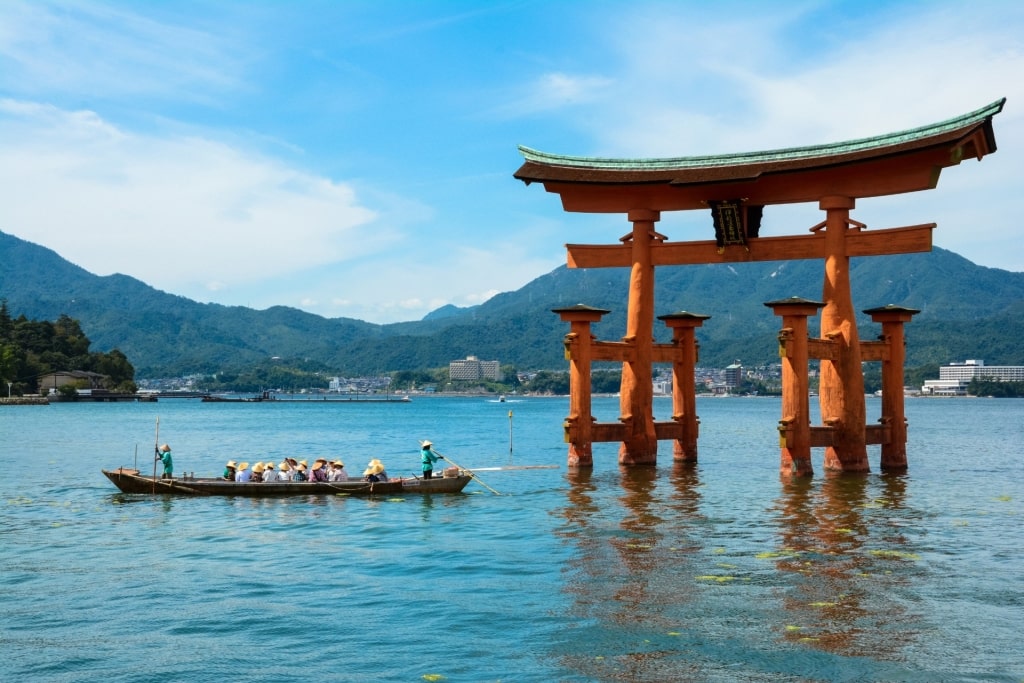
Itsukushima Shrine in Miyajima Island, Hiroshima Bay
As you step onto Miyajima Island, also known as Itsukushima, located in Hiroshima Bay, you’ll enter another world, full of nature and divine temples that Japan is known for, all framed by the vast bay and the mountainous backdrop.
Part of the island might appear to your eyes to be floating. The giant red wooden torii gate of Itsukushima Shrine, built in the 12th century, is surrounded by water on all sides at high tide. Today, it’s a UNESCO World Heritage Site.
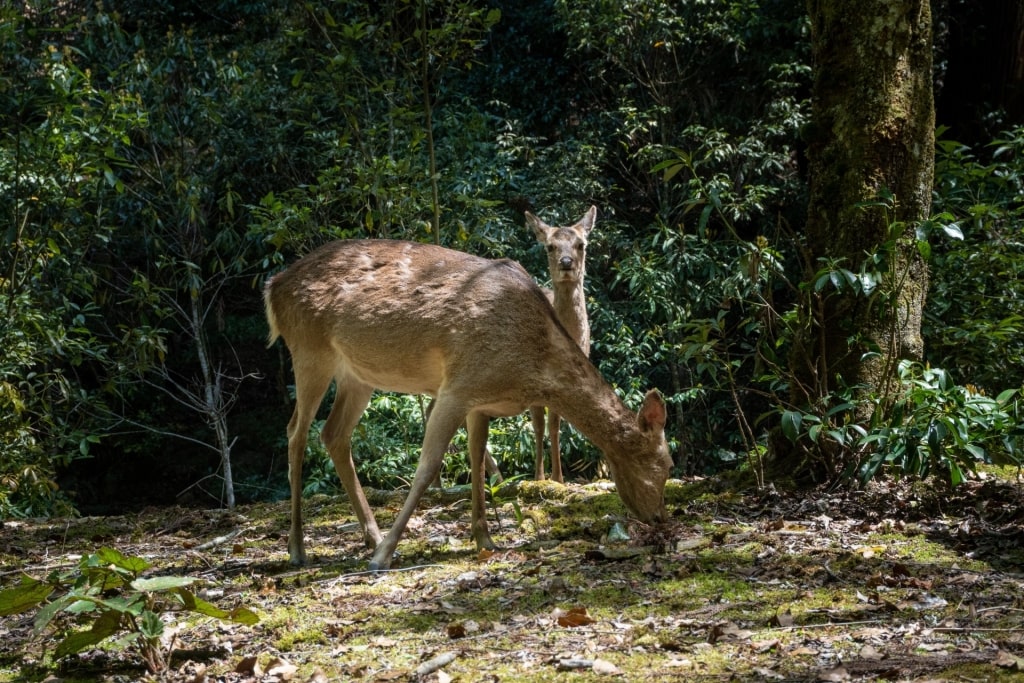
Sika deer
Miyajima is also known for its wildlife, especially the island’s free-ranging Sika deer. You can walk through lush forests, then hike up to Mount Misen to get above the tree line for gratifying views of the majestic Seto Inland Sea and surrounding islands.
The island is also rich in local delicacies, the most famous being freshly harvested oysters, which locals like to grill. Should you have a craving for something sweet, you can sample the island’s maple-leaf-shaped momiji manju cakes, which come with different filling pastes.
Sengan-en Garden, Kagoshima
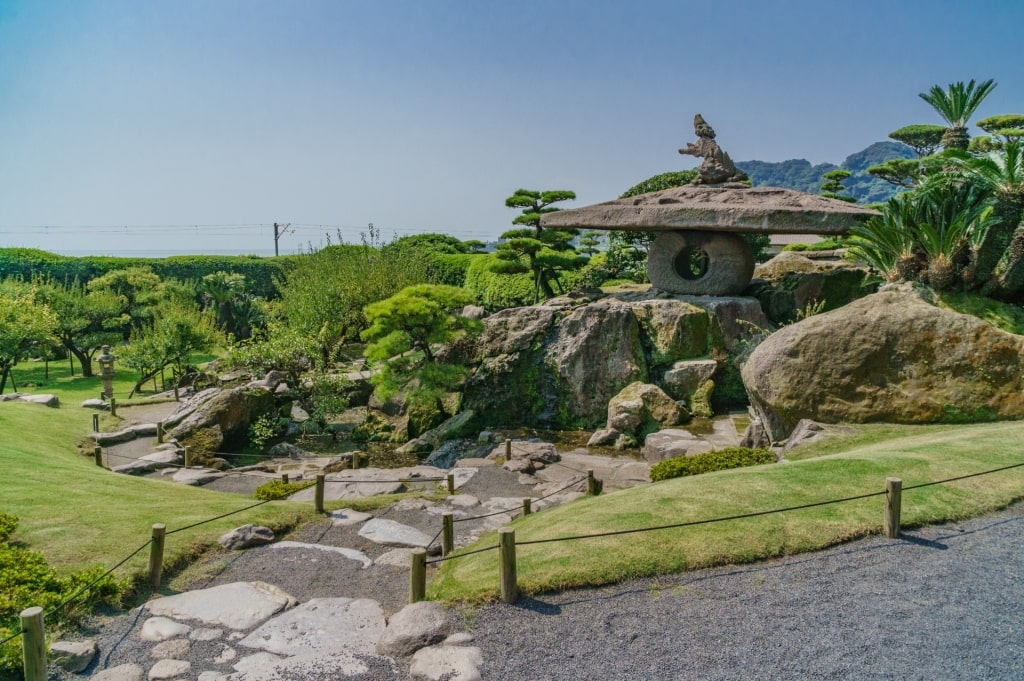
Sengan-en Garden, Kagoshima
Sengan-en Garden in Kagoshima borders the sea, offering you expansive views of Kinko Bay, or Kagoshima Bay, as well as magnificent vistas of the still active Sakurajima volcano.
The garden, built in 1658, showcases one of the finest examples of Japanese landscaping art on Kyushu Island. As you pass by gates, temples, and ornamental ponds, you’ll be knocked off your feet by the garden’s transcendent beauty.
You can tour the stately house and its inner garden here, built by the Shimadzu family, then wander around the grounds some more, with the backdrop of the volcano purposely incorporated into the area’s design, giving it a majestic appearance.
You’ll also find shrines on site, with one even dedicated to house cats, along with a pretty bamboo grove, interesting rock formations, lots of water features, and the Shoko Shuseikan Museum, detailing the long history of this notable samurai clan.
Mount Rokko, Kobe
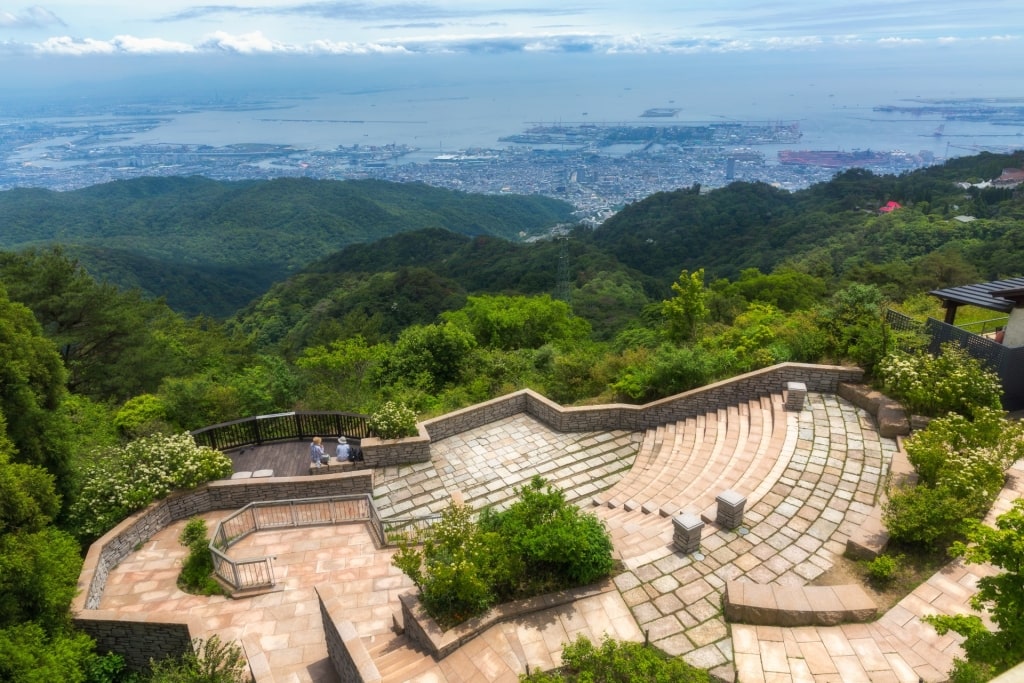
Mount Rokko, Kobe
Escaping to Mount Roko, or Rokko Saikoho, is one of the best things to do in Kobe if you’re craving fresh air and the countryside.
Depending on your physical condition, you can hike up to the top, although budget up to three hours for the trip. Conversely, you can hop on the ropeway and get to the top in no time at all.
Once you reach the summit, Rokko, shrouded with lush greenery, will offer you extensive views of Kobe, Osaka Bay, and even Awaji Island. There’s a delightful botanical alpine garden near the Rokko Garden Terrace too, filled with an array of plants.
Amble along the scenic hiking trails at or near the apex of Rokko Saikoho, and then head down the mountain and visit the hot springs of Arima Onsen at the base of the mountain for some water-infused relaxation.
Fushimi-Inari Taisha Shrine, Kyoto
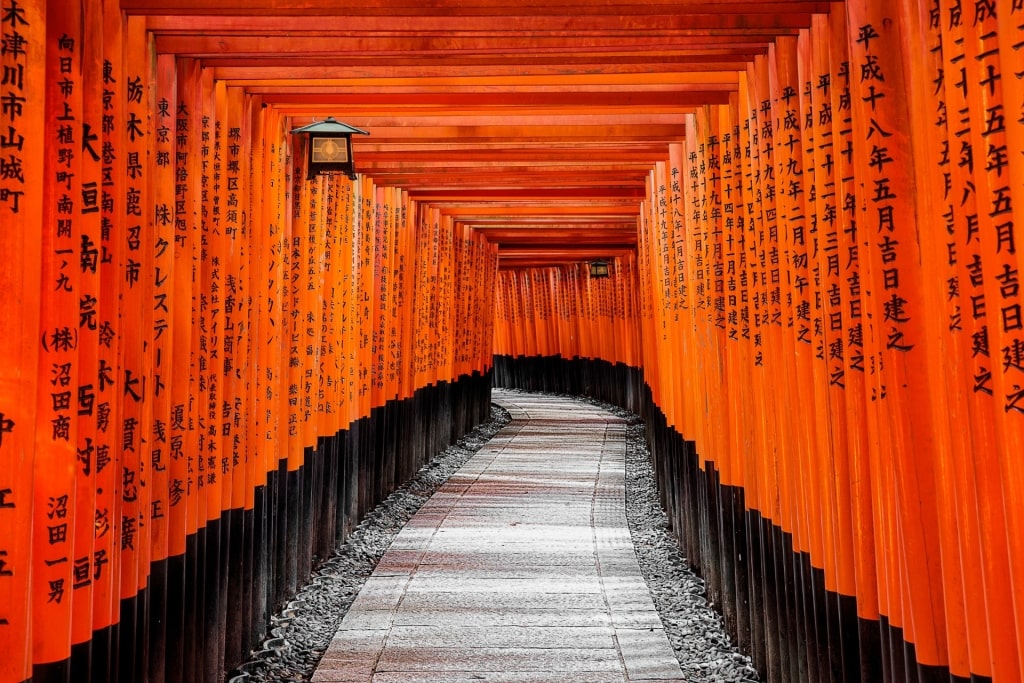
Fushimi-Inari Taisha Shrine, Kyoto
Bathe yourself in a sea of red at Kyoto’s Fushimi-Inari Taisha Shinto Shrine, one of the most iconic places to go in Japan. The shrine is celebrated due to its thousands of vermilion torii gates, which form an impressive pathway leading toward the top of Mount Inari.
As you walk through the seemingly never-ending tunnel of torii gates, you will be immersed in a spiritual experience. The shrine is dedicated to Inari, the Shinto god of rice, who is safeguarded by foxes, of which there are many statues here.
If you choose to move beyond the gate-lined trail, you can then trek up to the top of this holy mountain for views of the Japanese city below. Fushimi Inari exudes a dreamlike, otherworldly ambiance, which is unique, even in Japan.
Read: Two Days in Kyoto
Tokyo Tower, Tokyo
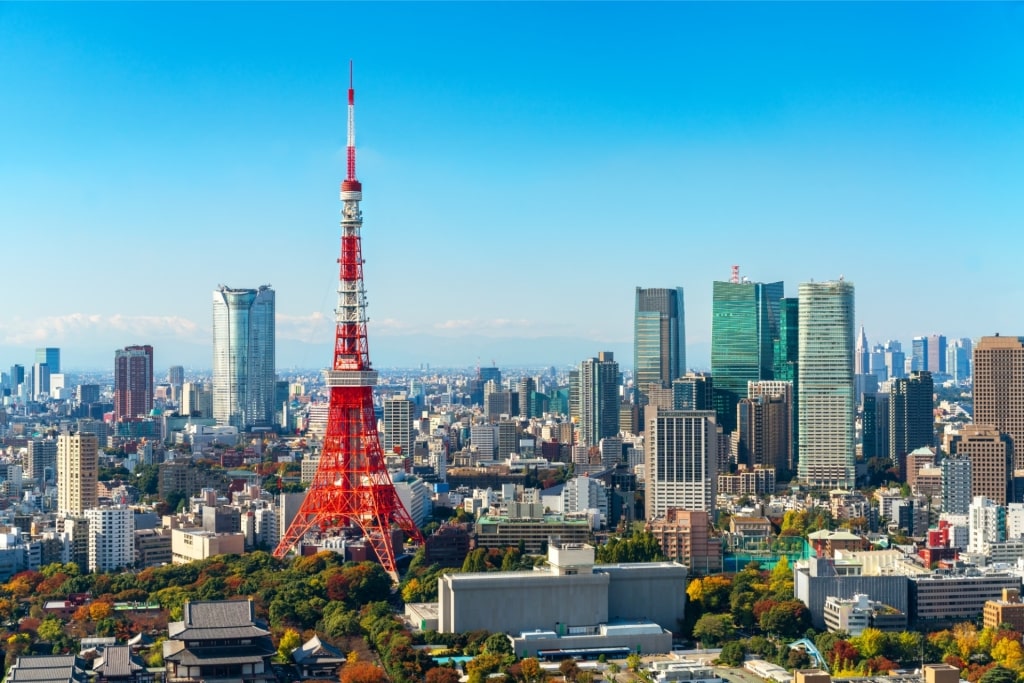
Tokyo Tower, Tokyo
One of the most popular destinations for amazing views of Tokyo has got to be the omnipresent Tokyo Tower. Come day or night, when it lights up, it dominates Tokyo’s beautiful skyline.
At 1,092 feet, this famous Japanese landmark resembles the Eiffel Tower in Paris to some degree, providing you with some gorgeous panoramas over the nation’s capital city.
The tower, completed in 1958, offers upper deck tours at the main observatory and the special observatory. These decks are reachable by stairs, or elevators. Stairs are the way to go if your legs are strong enough and you’re up to the challenge.
The main deck features a café, along with a trinket shop for souvenirs, while the top deck will give you views from even higher above, letting you gaze at the incredible cityscape below.
Ryugado Cave, Kochi
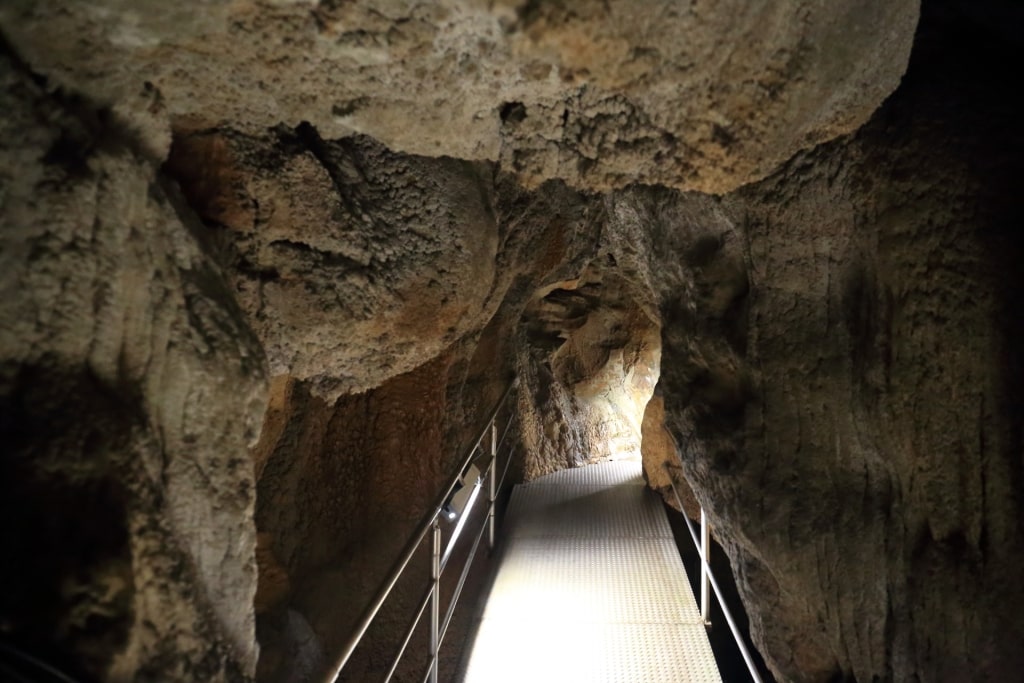
Ryugado Cave, Kochi
When you step inside Ryugado Cave, just to the east of Kochi on Japan’s Shikoku Island, it might feel like stepping into a hidden realm ripped out of the pages of a children’s fairytale.
The cave is one of the nation’s best known limestone formations, offering an ethereal look below the surface of the planet. Book a tour and head into the depths, where you will be gripped by the long passageways, molded by millions of years of geological activity.
The cave, with stalactites dangling from ceilings and water flowing throughout, is brightly lit, and covered by strange rock formations.
Ryugado Cave, located on Mount Sampo, is also a favorite haunt of bats, which you may see hanging upside down from the cave ceilings. You can also visit the Ryugado Museum to learn about the natural history of the cave and some of the wildlife that lives here.
Kobe Harborland, Kobe
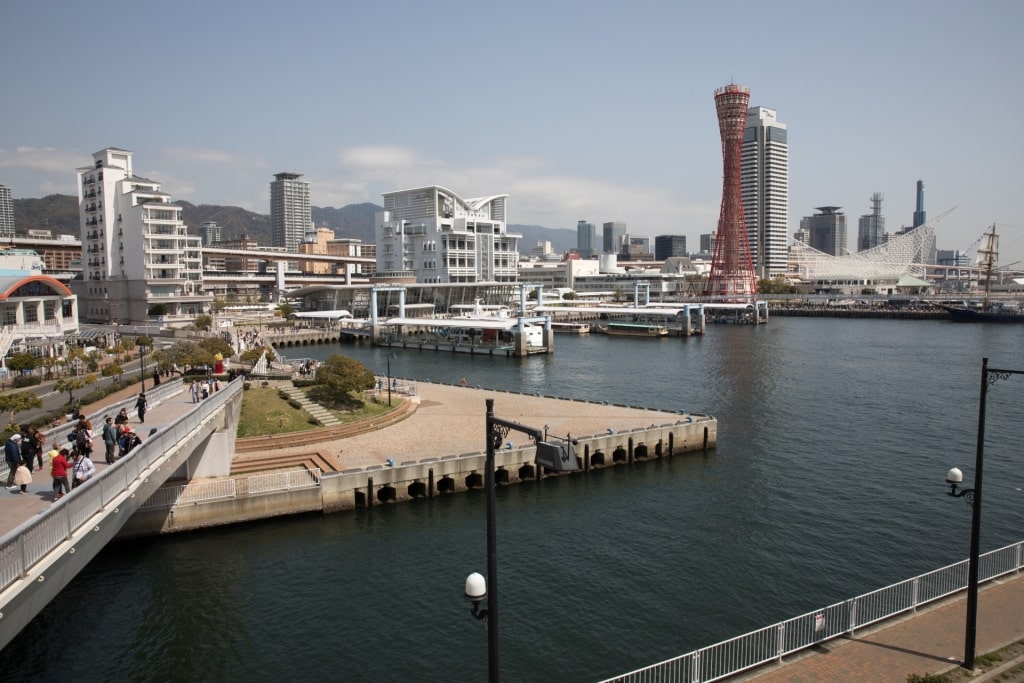
Kobe Harborland, Kobe
If you find yourself in Kobe and want to spend some time by the Taki River, you can’t beat a visit to Harborland. This entertaining locale will provide you with loads of shopping opportunities and fun things to do.
Head for the Umie shopping complex, which has three sections: Mosaic, North Mall, and South Mall. The Mosaic slice of the center is next to the water, where you will find plenty to eat from cafés to extravagant restaurants serving Japanese or international delicacies, along with lots of cute little stores.
The covered South and North Mall sections are where you’ll want to go if you plan on even more shopping, including the culturally fascinating experience of a Japanese department store.
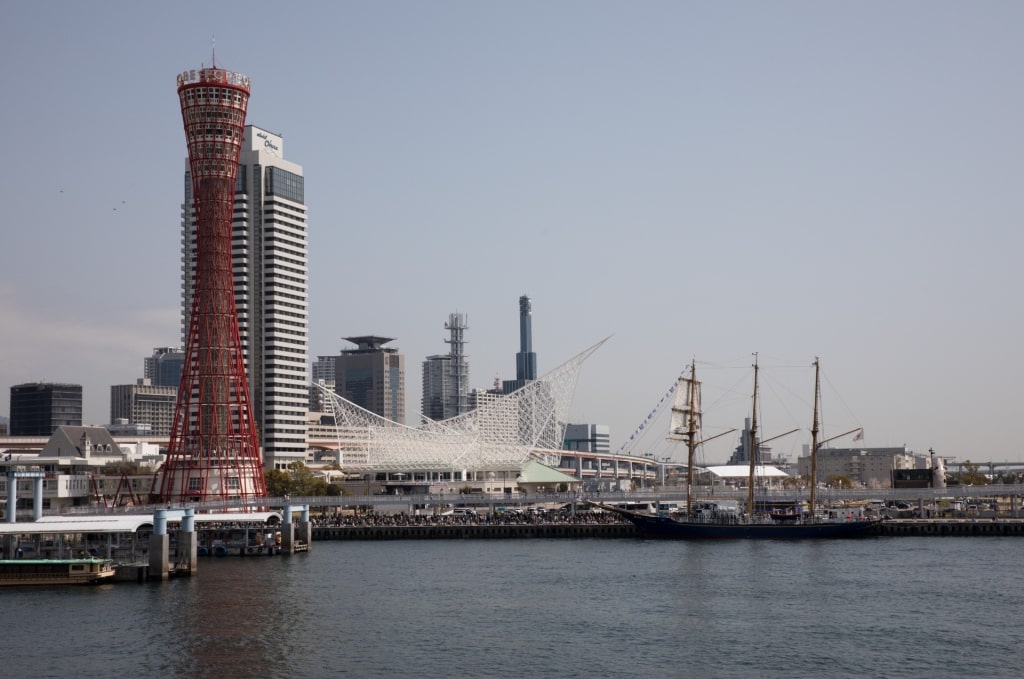
Kobe Port Tower, Kobe
Other attractions worth a look include Kobe Port Tower, with its distinct hourglass silhouette, plus a wonderful observation deck offering city views.
Mosaic’s Ferris wheel is also great for elevated views, while Kobe Brick Warehouse, with its old red brick buildings now converted into shops and restaurants, is perfect for a stroll along the harbor.
Ibusuki Sand Bath, Kagoshima
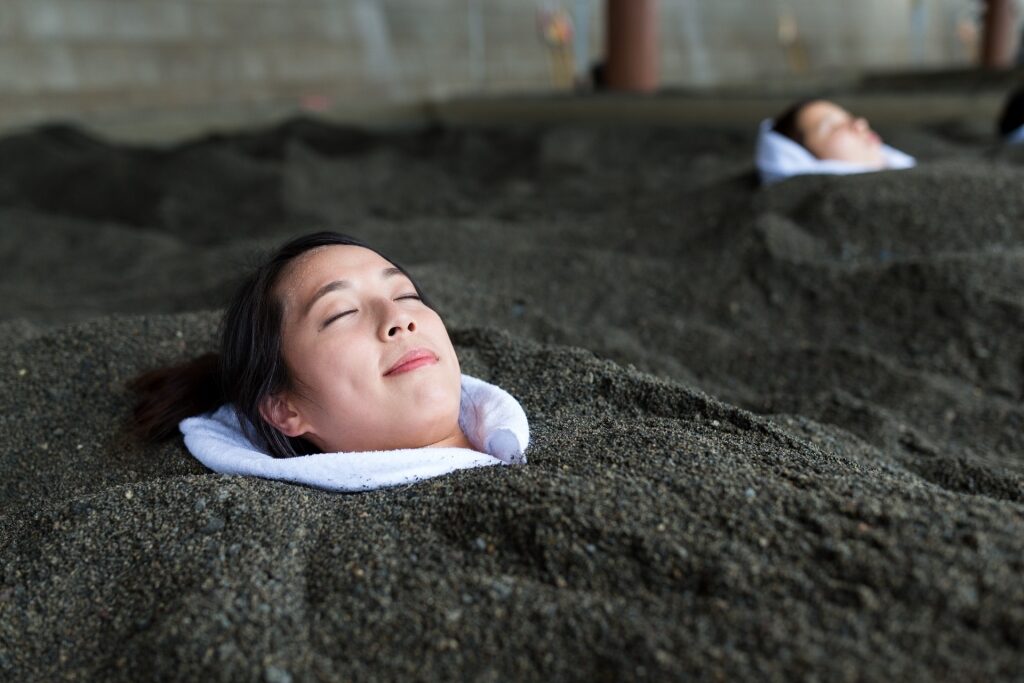
Ibusuki Sand Bath, Kagoshima
How about a sand bath? If you’re in Kagoshima, head to the southern part of Kagoshima Prefecture to the town of Ibusuki to experience an Ibusuki sand bath, a unique and rejuvenating spa outing, hard to find anywhere else in the world.
Essentially, a sand bath means you’re going to be buried in sand. You have to lie on the beach and allow the attendees to cover you with a mound of naturally heated black sand, which is the goal of an Ibusuki sand bath. Don’t worry; your head will be left uncovered.
This “bathing” practice dates back centuries and is still used today because people find it so beneficial for their skin, blood circulation, and overall health.
The sand is naturally heated by a local hot spring, which runs beneath this Japanese beach, allowing hot water to seep into and heat the sand.
After your sand bath, you can rinse the volcanic sand from your body, and then amble over to the hot spring for a more traditional soak in some warm, soothing water.
Yokohama Chinatown
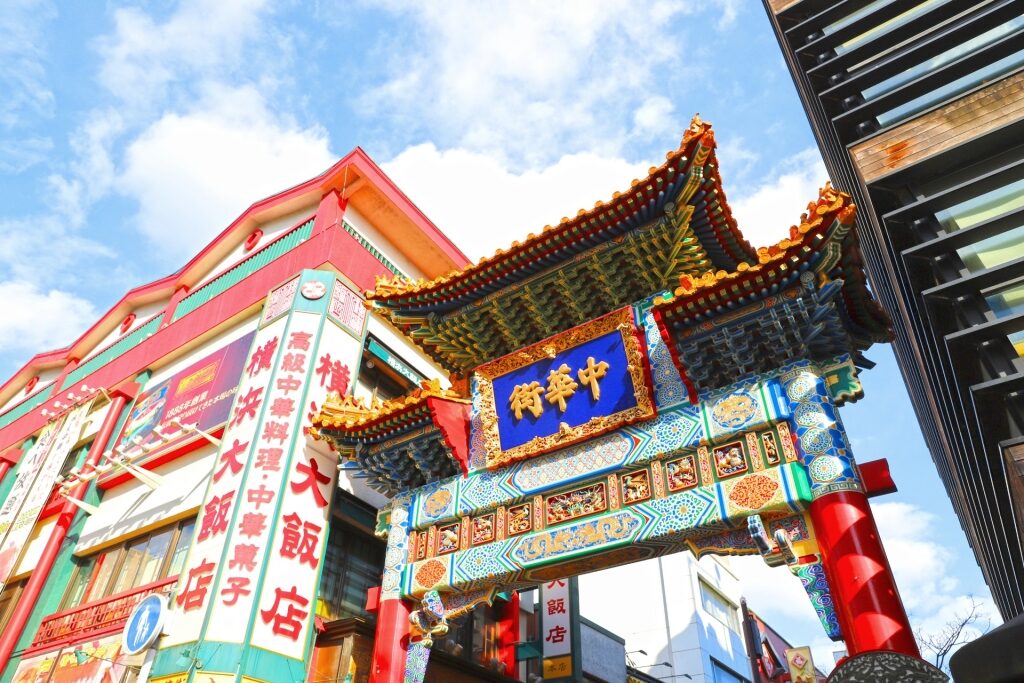
Yokohama Chinatown
Just because you’re in Japan doesn’t mean you can’t experience some Chinese culture as well. And there’s no better place to get a taste of China than Yokohama Chinatown, just to the south of Tokyo.
With hundreds of shops and restaurants, the area’s main attraction lies in its bustling atmosphere; it also happens to be the biggest Chinatown in Japan.
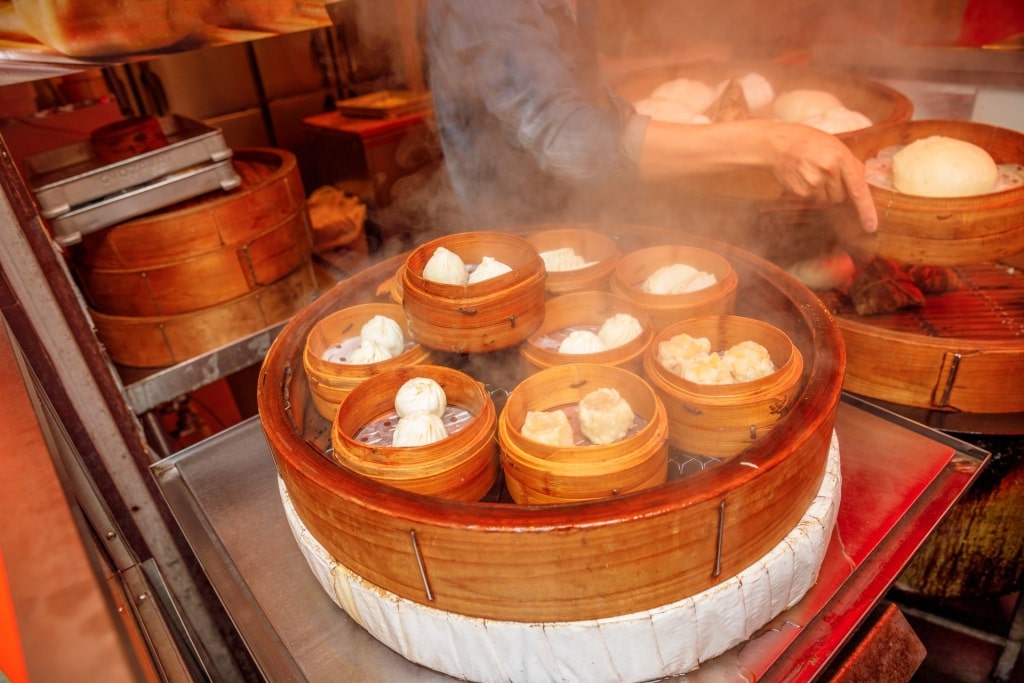
Dim sum
You’ll come across colorful Chinese-themed decorations here, an array of regional cuisine from mainland China, including dim sum and lip-smacking street food like steamed buns, and a vibrant and welcoming atmosphere.
The town, while very food-centric, also boasts some ornate gates like the Zenrin Mon Gate, red lanterns strung across the alleyways, and even a few temples, like Kuan Ti Miao, adding to the Chinese-inspired setting.
Kumamoto Castle, Kumamoto
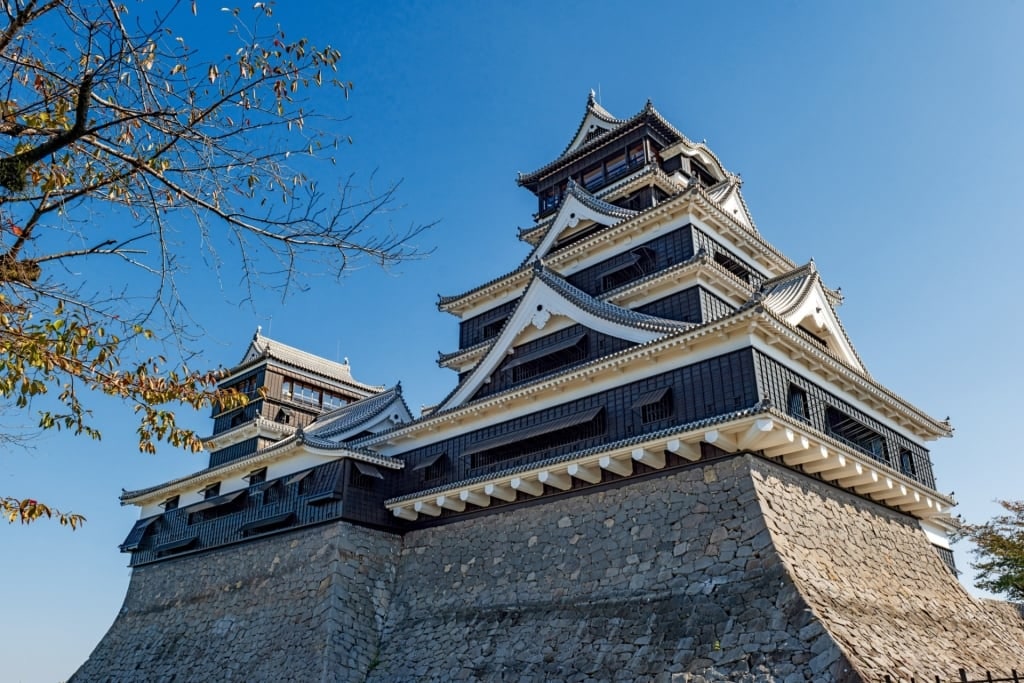
Kumamoto Castle, Kumamoto
Kumamoto Castle, and the adjacent Sakura-no-Baba Josaien tourist complex, are two related sites in Kumamoto that will take you back in time to feudal Japan, giving you some insight into life as it once was here in the past.
This impressive castle, hit by earthquake damage over the centuries, has somehow survived. And despite being walloped by Mother Nature and enduring a long siege in 1887, the massive stone walls, turrets, and Edo-era architecture have mostly endured, even if in need of restoration work from time to time.
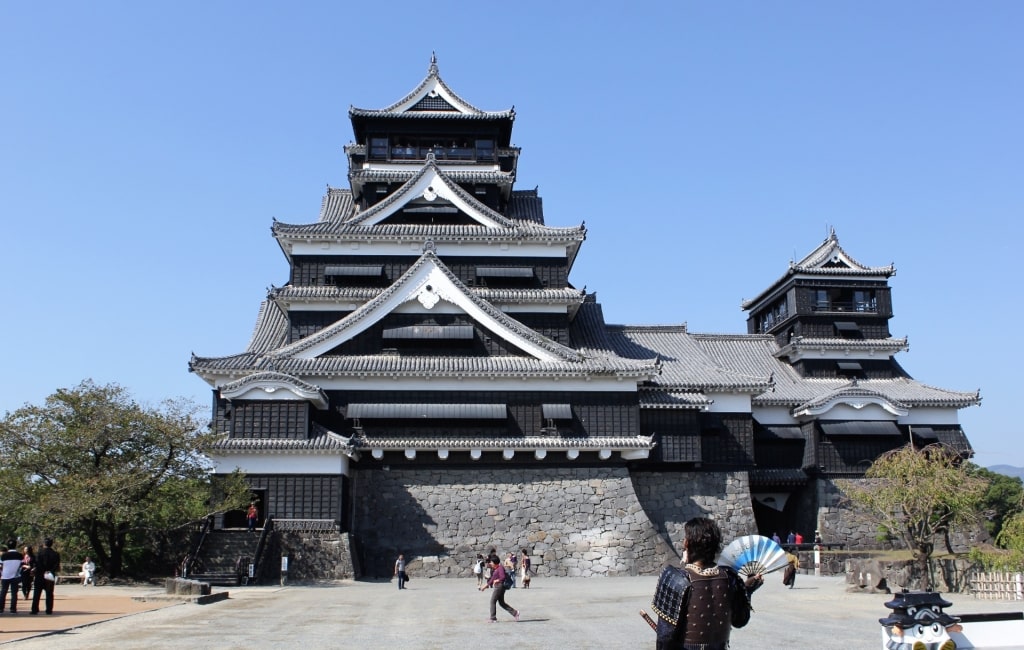
Kumamoto Castle, Kumamoto
With cherry blossoms, the failed Satsuma historical rebellion, alluring gray stones, multi-tiered rooftops, beautiful grounds, and the Kato Shrine, dedicated to the area’s first feudal ruler, this castle will provide you with a fun and educational visit.
Check out Sakura-no-Baba Josaien nearby, where you can taste authentic Japanese cuisine from small restaurants and cafés. Watch the samurai reenactors and even dress up as a samurai yourself, for an interesting photo opportunity.
Nanzoin Temple & the Reclining Buddha, Fukuoka
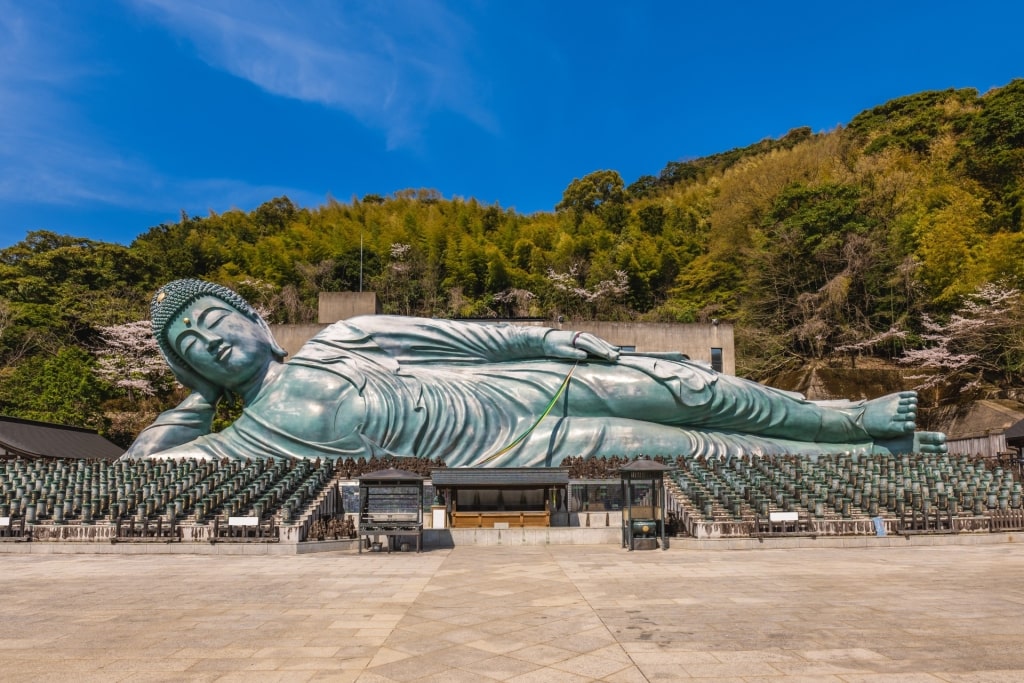
Reclining Buddha, Fukuoka
When you visit Nanzoin Temple and the Reclining Buddha in Fukuoka, you will witness one of the world’s largest bronze statues. The Reclining Buddha in question is an astonishing 135 feet long.
The expression on this Buddha’s face is one of deep serenity. The entire complex fosters an air of tranquility..
The temple is an active place of worship and prayer, so guests are asked to be respectful of this fact, even if visiting simply to take a look.
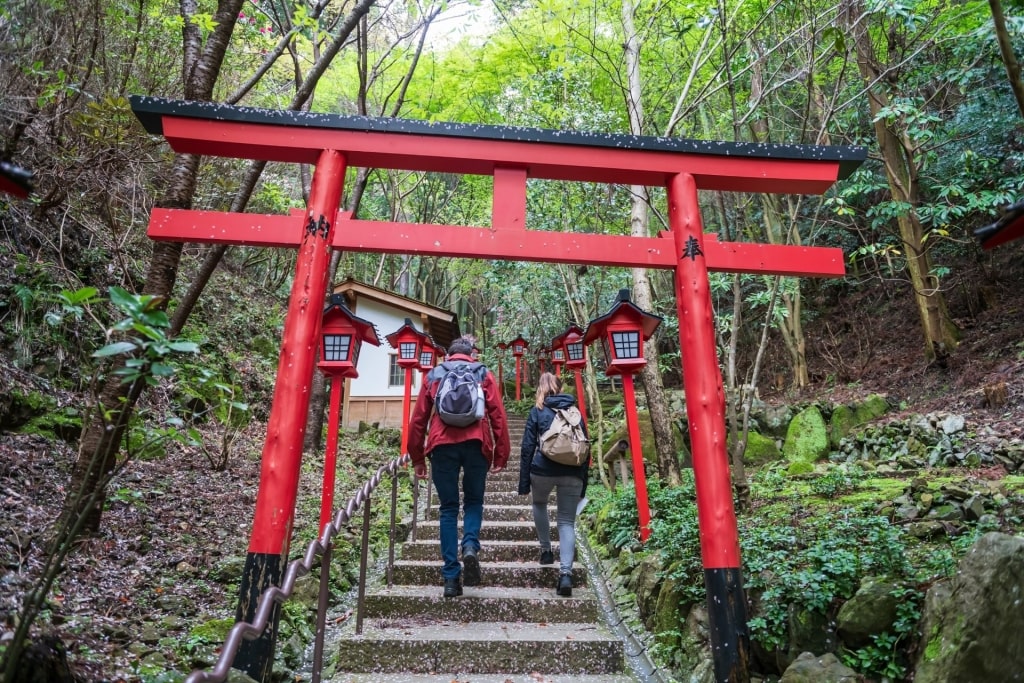
Nanzoin Temple, Fukuoka
You’ll find woodland paths here that will take you to different temples and shrines, as well as Nakamise Street, with nibbles and temple trinkets, and even a tunnel connecting the big Buddha with the Hon-do hall.
Many visitors come to Nanzoin to touch the feet of the Buddha for good luck and fortune, which you might experience, too, if you decide to add this temple to your list of places to go in Japan.
Oirase Gorge, Aomori
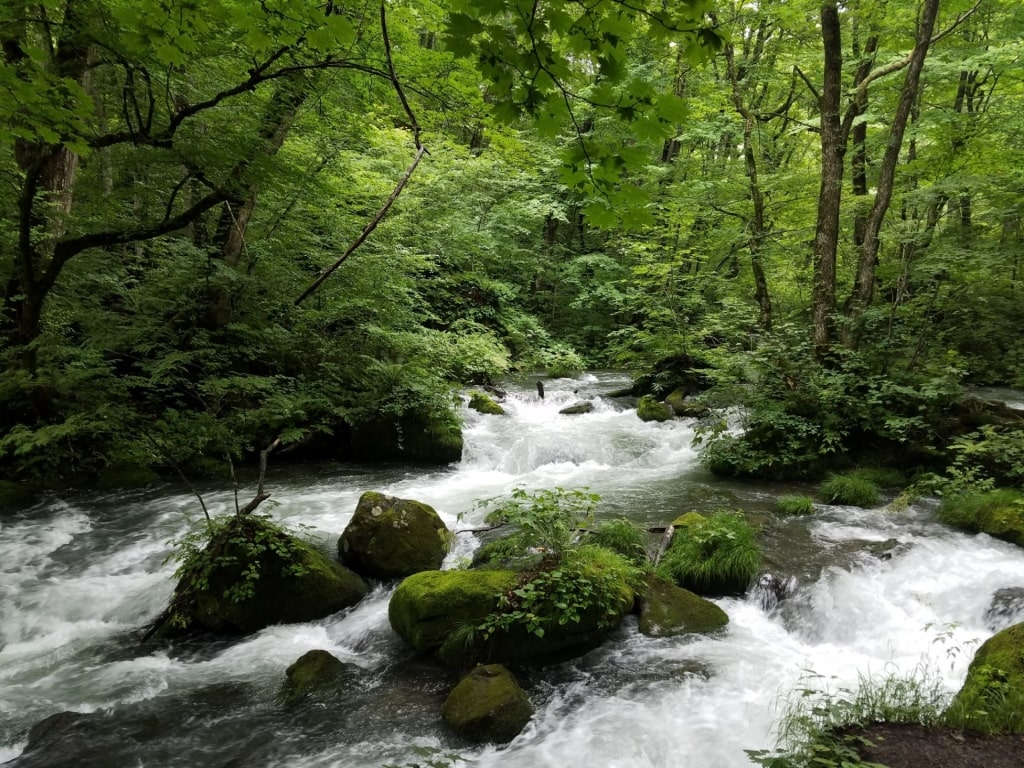
Oirase Gorge, Aomori
For a slice of exalted scenery, highlighting Honshu’s natural beauty, it’s hard to beat Oirase Gorge, near Aomori, one of the most impressive landscapes in Japan.
Walk along the paths next to the crystal-clear Oirase River, with gurgling water and magnificent greenery accompanying you as you navigate the area’s twisting forest trails.
The eight-mile corridor can be enjoyed over a few hours. Depending on the time of year you arrive, you will be treated to a blaze of autumn foliage or earlier in the year, the fresh and verdant flora of spring and summer.
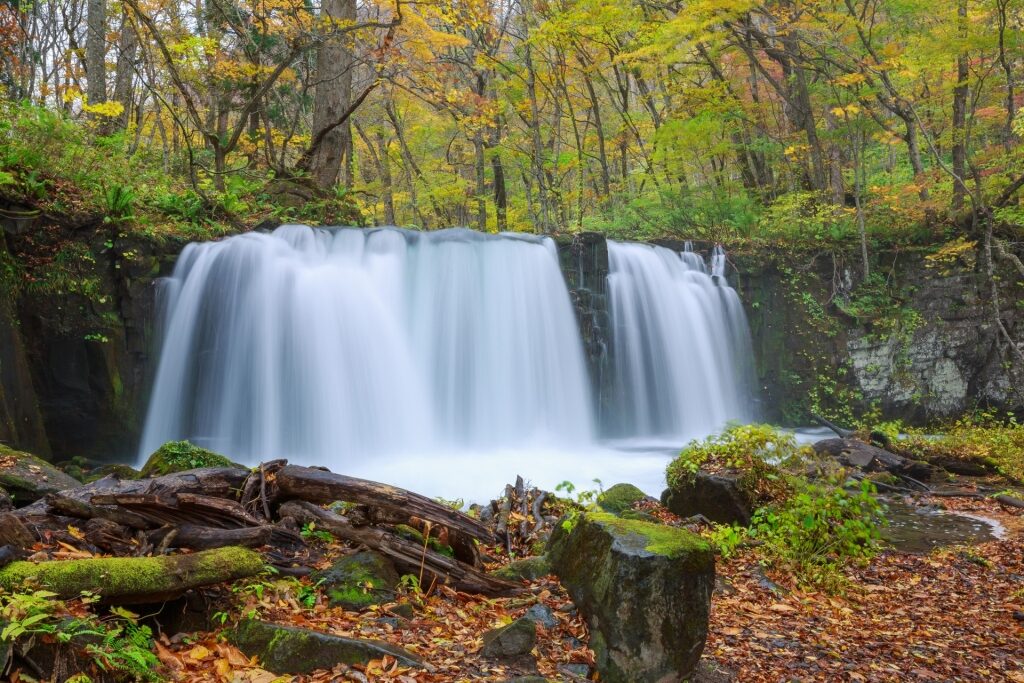
Choshi Otaki waterfall, Aomori
The sound of river bubbling next to the trail and the sight of waterfalls, like the Choshi Otaki waterfall, plus the refreshing forest air instill the region with an ambiance of contemplation, making a visit to this strikingly picturesque part of the country all the more memorable.
Read: Expert Tips for Traveling to Japan
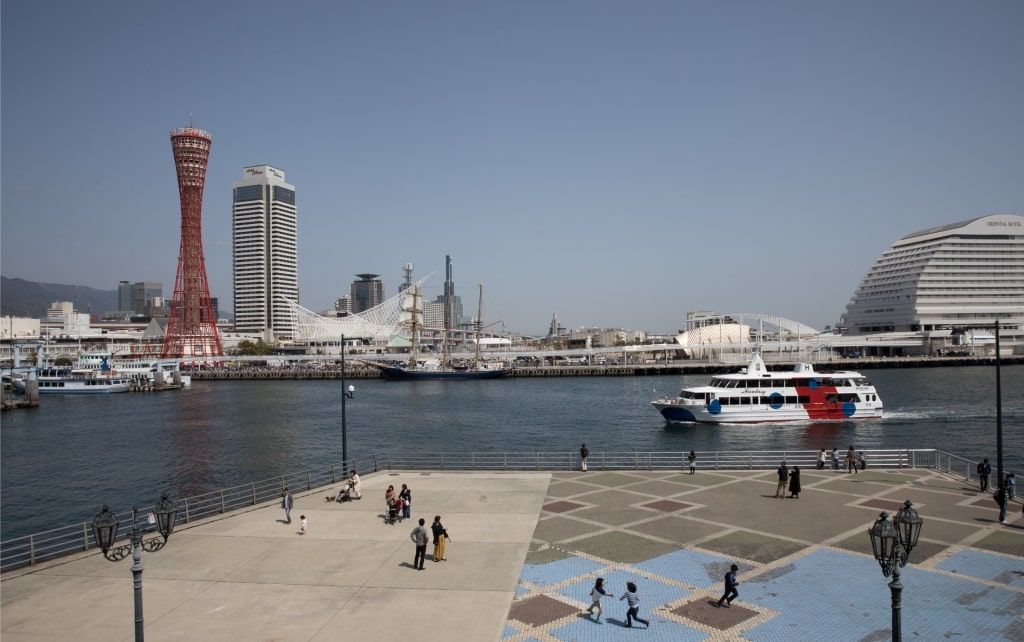
Kobe Harborland, Kobe
Enjoy the beauty of Japan’s dramatic landscapes, incredible islands, and exuberant culture by booking a voyage to the Land of the Rising Sun with Celebrity Cruises. Browse our Japan cruises and plan the journey of a lifetime.
